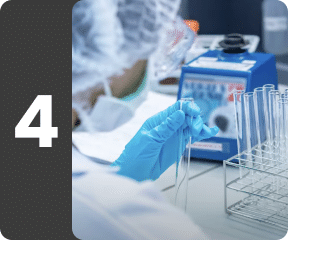Urinary Tract Infection Panel near me in Noida
Understanding Urinary Tract Infection Panel in Noida
What is Urinary Tract Infection Panel in Noida?
This package comprises a group of tests that are used to diagnose urinary tract infections. As the name suggests, it is an infection of the urinary tract which includes the kidneys, ureters, urinary bladder, and urethra. You can order this tests if you have are experiencing burning sensation while urinating, strong smelling urine, feeling of not able to empty your bladder completely or lower back pain.
What does Urinary Tract Infection Panel measure?
Contains 16 tests
Creatinine
Creatinine is a waste product which is produced by the muscles due to the breakdown of a compound called Creatine. During the cycle of energy production which is required to contract muscles, creatine is produced. Kidneys remove creatinine from the body by filtering it from the blood and then releasing it into the urine. This test measures the amount of creatinine in the blood.
The body produces creatine and creatinine at a relatively same rate. Since kidneys filter most of the creatinine from the blood and release it into the urine, the blood levels can be used as an indicator to know how well the kidneys are functioning. The amount of creatinine produced depends upon the size of the person as well as their muscle mass. That is why levels of creatinine are higher in men as compared to women and children.
Know more about Creatinine

Urine Routine & Microscopy
Urine Routine and Microscopy test involve the three-part evaluation of the urine sample.
1. Gross Examination - It involves the visual examination of the urine sample for color and appearance.
2. Chemical Examination - It is done by urine dip-stick method which involves the use of reagent test strips. These test strips are dipped into the urine sample and the colors that develop are matched with the control for analysis. It is done to examine the urine sample for glucose, protein, pH, specific gravity, blood, nitrites, ketones, leukocyte esterase, bilirubin, and urobilinogen.
3. Microscopic Examination - It involves the examination of the urine sample under the microscope for casts, crystals, cells, bacteria, and yeast.
Know more about Urine Routine & Microscopy
This further contains
- Glucose - Fasting Urine
- Urobilinogen
- Ketone
- Nitrite
- Colour
- Appearance
- Specific Gravity
- Epithelial Cell
- Casts
- Crystals
- Protein Urine
- Ph for Urine

Urine Culture and Sensitivity
The urine culture & sensitivity test is performed to detect and diagnose a microbial infection of the urinary tract. The metabolic processes in the body produce products called metabolites which are present in the blood. Some of them are utilized by cells, while others are wastes which are filtered out of the blood by the kidneys in urine. Urine produced by the kidneys passes through ureters into the urinary bladder where it is stored until the urinary bladder is full. Once full, the urinary bladder releases the urine through another tube called urethra to the outside of the body. The pathway followed by urine from the kidneys to the outside is called the urinary tract. The urinary tract may be infected by some microorganisms causing various conditions. Urine is normally sterile, but if urinary tract infection occurs, the pathogenic microorganism may be found in urine. A urine sample is collected and cultured to detect such an infection and to identify the microorganism causing it.
The collected urine sample is placed on an agar medium (nutrient solution mixed with agarose gel) and incubated at body temperature for 24 to 48 hours. This allows the growth of the microorganisms in the sample if any. Growing microorganisms form different types of colonies on the agar which are studied further in a laboratory to determine the exact microbe causing the UTI.
Once the pathogen is identified, antibiotic susceptibility test is performed to guide treatment for the UTI being tested for. This may be done in two ways. The conventional method involves the use of small filter paper discs with antibiotic of known concentration and placing them on agar plate where the pathogen is cultured. The antibiotic creates a small area around the discs where the microorganisms do not form colonies. The radius of this zone is measured to estimate the efficacy and strength of that antibiotic in treating the UTI. The other method involves an automated machine to detect the sensitivity pattern to find out which antibiotic can be used to treat the infection.
Know more about Urine Culture and Sensitivity

Uric Acid
The Uric acid test measures the levels of uric acid in the blood. Uric acid is a nitrogenous compound produced by the metabolic breakdown of purine. Purines are nitrogenous bases in DNA forming parts of the structural framework of the cells. Breakdown of purines occurs when cells become old and die, forming uric acid. Uric acid is also formed from the metabolic breakdown of some types of food like red meat, seafood, beans, etc.
Most of the uric acid in the blood is filtered and eliminated by the kidneys and a small remaining amount in the stool. The concentration of uric acid in the blood can increase due to overproduction of uric acid or improper elimination of uric acid, and this condition is called Hyperuricemia. Hyperuricemia can also be caused due to cancer treatment by chemotherapy or radiotherapy. These treatment methods kill the cancer cells, which may leak the uric acid into the blood.
Excess uric acid can form crystals in the synovial fluid between the joints causing inflammation and pain. This condition is called gout and can severely damage the joints if left untreated. The Uric Acid Test can indicate the presence of gout, or risk of formation of gout. However, it is not a definitive test for gout. Confirmatory test for gout is performed by analysis of synovial fluid (joint fluid) for monosodium urate crystals. Chronic Hyperuricemia can cause the formation of tophi, which are hard lumpy deposits of uric acid crystals formed under the skin, in the joints, and at the top of the ears. Tophi cause severe damage to the joints and may compress nerves causing chronic pain and disfigurement. The excess uric acid may also deposit and crystallize in the kidneys causing kidney stones and acute renal failure.
Know more about Uric Acid

Blood Urea Nitrogen
The Blood Urea Nitrogen test measures the amount of urea nitrogen in the blood. Urea is a waste product which is formed in the liver. It is formed when protein is metabolized into amino acids. This leads to the production of ammonia which is further converted into urea which is a less toxic waste product.
Both ammonia and urea have nitrogen as their component. The liver releases urea into the blood which is then carried out to the kidneys. Here, it is filtered out of the blood and then released into the urine. Since this is a continuous process, a small and stable amount of urea nitrogen always remains in the blood.
In the case of kidney or liver diseases, there is a change in the amount of urea present in the blood. If the liver produces urea in increased amounts or if there is any problem in the functioning of the kidneys, there can be difficulty in filtering out wastes of the blood which will lead to rising in urea concentrations in the blood. If due to liver damage or disease there is less production of urea, the concentration of BUN will fall.
The BUN test is done along with creatinine test to evaluate kidney function to diagnose kidney disease and to monitor patients undergoing treatment of kidney disease.
Know more about Blood Urea Nitrogen
Book a Urinary Tract Infection Panel test at home near me





Other tests









